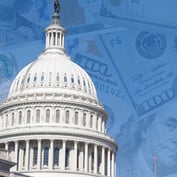What You Need to Know
- By the mid-2030s, revenue will be sufficient to cover only 79% of promised Social Security benefits.
- Not knowing how the system will change could cause savers to make costly mistakes in retirement planning.
- Fixing Social Security now versus in 2035 could be like giving retirees a bonus of between one and 2.5 months of earnings, the researchers say.
The Social Security trust fund is on track to run out by the mid-2030s, and revenue will be sufficient to cover 79% of promised benefits, according to estimates by the Social Security Trustees.
A new working paper published by the National Bureau of Economic Research says the U.S. government will have to decide how to deal with the impending trust fund exhaustion, beforehand or at the time of depletion, but it is uncertain what it will do.
Several options are frequently discussed. One is to cut benefits in a way that increases the system’s progressivity; another is to raise payroll taxes, either across the board or at higher income levels.
The government could also address the funding shortfall by issuing more debt, which could delay the tax increases or benefit cuts required to restore solvency to the system, perhaps beyond the lifetimes of today’s adults.
The direct cost of the reforms required to close Social Security’s financial shortfall is unavoidable. Each option has direct implications for Americans’ financial well-being.
The paper — written by John Shoven and John Watson of Stanford University and Sita Slavov of George Mason University — focuses on the cost of government indecision regarding which reform to implement.
The authors find that government indecision creates uncertainty for young and middle-aged workers who are planning for retirement. “An individual who assumes that a particular reform will occur — and is surprised by a different reform — has made a costly mistake.”









 June 01, 2021 at 04:54 PM
June 01, 2021 at 04:54 PM











